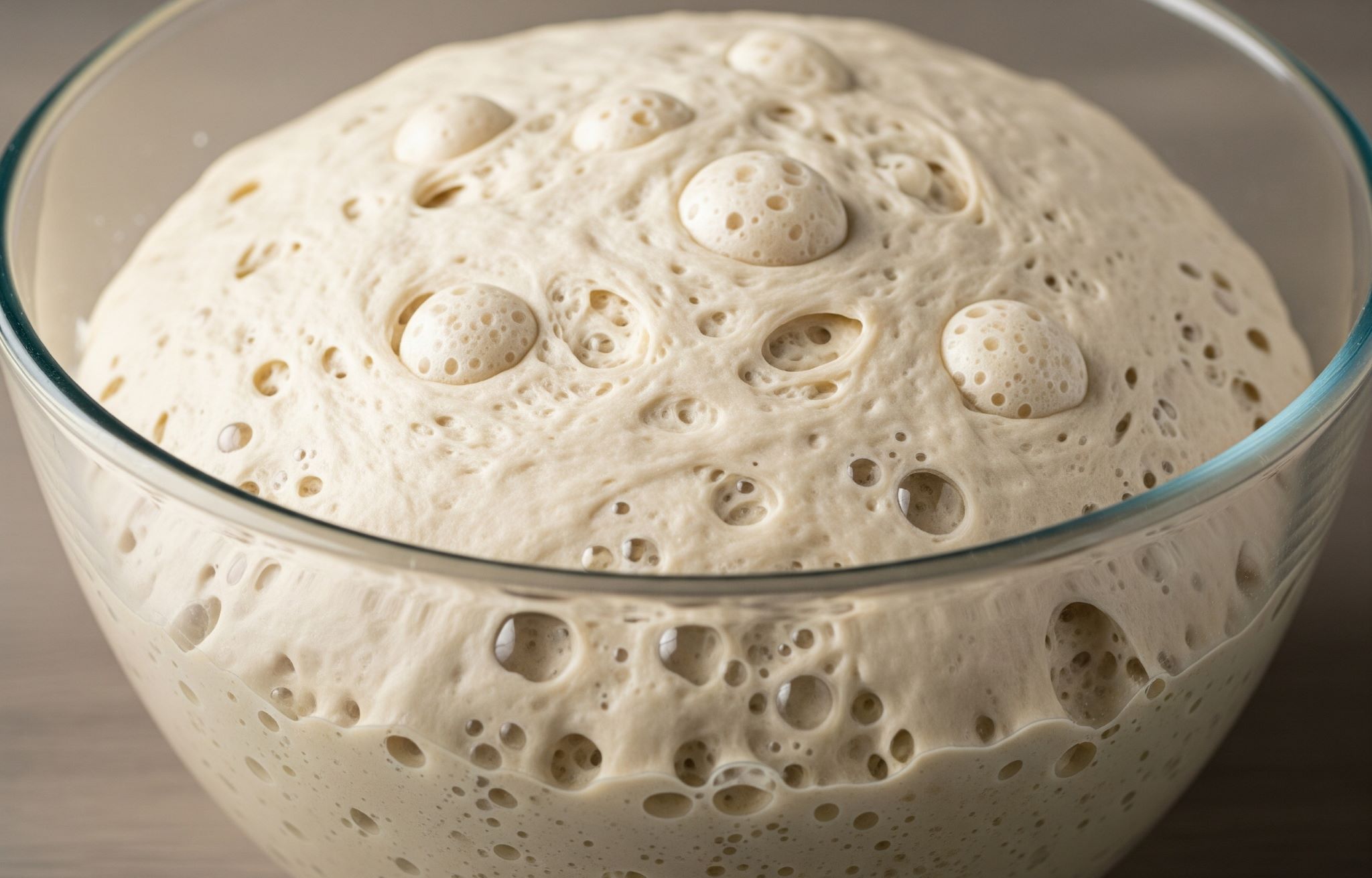Understanding Bulk Fermentation
The single most important step for flavor and structure.
Bulk fermentation, often called the "first rise," is the period of time after mixing your ingredients but before dividing and shaping your dough. Many bakers argue it's the most critical phase in the entire bread-making process. Getting it right is the key to a beautiful, open crumb and a complex, nuanced flavor.

What's Happening During Bulk Fermentation?
Two crucial things are happening simultaneously:
- Flavor Development: The yeast and bacteria in your leaven are fermenting the sugars in the flour, producing carbon dioxide (CO2) for rise and organic acids for flavor. A proper bulk ferment develops the characteristic tangy, complex taste of good bread.
- Structure Building: Through a series of "stretch and folds," you are developing the gluten network. This creates a strong, elastic web that can trap the CO2 gas, allowing the dough to rise upwards in the oven instead of spreading out.
How Do I Know When It's Done?
This is the million-dollar question. It's a combination of time, temperature, and visual cues. Judging bulk fermentation is a skill that takes practice, but here's what to look for:
- Volume Increase: The dough should have increased in volume by a certain percentage, typically 30-50%. A dough that has doubled is often over-fermented.
- Jiggly and Aerated: The dough should feel alive and airy. When you jiggle the bowl, the dough should jiggle with it.
- Visible Bubbles: You should see bubbles of various sizes on the surface and sides of your container.
- Smooth, Domed Surface: The top of the dough should be smooth and domed, pulling away from the sides of the container.
The Temperature-Time Equation
Bulk fermentation is not a fixed time. It's a function of temperature. A dough at 80°F will ferment much faster than one at 70°F. This is precisely why CrumbScience was created—to use temperature to predict the ideal fermentation time, removing the biggest variable from the equation.
Take the Guesswork Out of Your Rise
Nailing bulk fermentation is the key to better bread. Let the CrumbScience tracker give you a data-driven prediction for when your dough is perfectly ready.
Track Your Next Bake